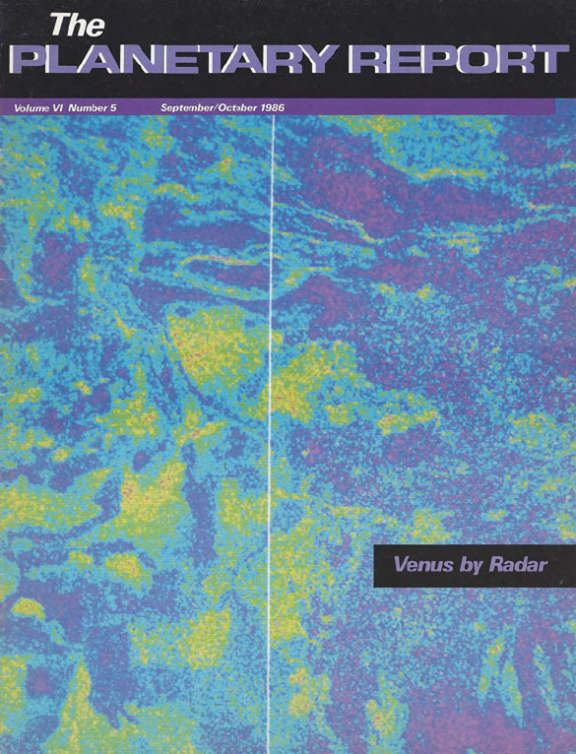The Planetary Report • September/October 1986
Venus by Radar
On the Cover: The thick, sulfuric-acid clouds of Venus hide its surface from conventional imaging techniques. Scientists have turned to cloud-piercing radar to "see" through to the surface. Soviet <i>Venera</i> and U.S. <i>Pioneer</i> orbiters returned radar data that scientists have compiled into images and maps of the planet's surface. Earth-based radar systems, such as the Arecibo Radio Telescope in Puerto Rico, can also be used to study Venus. Here is an Arecibo image of a region southeast of Lakshmi Planum in the northern hemisphere. Purples and blues represent smooth areas, while greens and yellows are rougher areas.
Features
3 A Talk With Thomas O. Paine: Louis Friedman sits down with the Chairman of the President's National Commission on Space.
7 A Time to Act: Louis Friedman presents an editorial on how we got where we are, and where we're going.
8 New Results from Venera 15 and 16: N. A. Armand, V. L. Barsukov, and A. T. Basilevsky showcase exciting new results from Venus.
11 The Stars Our Destination? The Feasibility of Interstellar Travel: Robert L. Forward looks at the options for traveling beyond our solar system.
Departments
10 News & Reviews NASA decisions, past and future.
27 Society Notes Volunteer network, the New Millennium Committee, and Halley's Comet.
The Planetary Report • September/October 1986
Help advance space science and exploration! Become a member of The Planetary Society and you'll receive the full PDF and print versions of The Planetary Report.


 Explore Worlds
Explore Worlds Find Life
Find Life Defend Earth
Defend Earth


